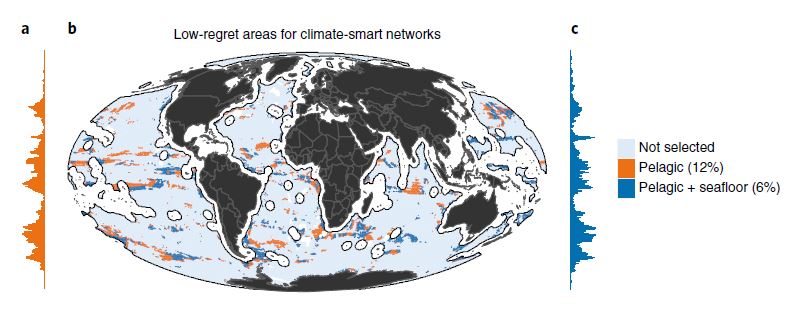April 4, 2022 | Nature Climate Change | Source |
Introduction: Marine species are rapidly shifting their habitats due to warming oceans, with movements varying by location and depth. As global goals push to protect 30% of the ocean, it is crucial to include the high seas—64% of the ocean that lies beyond national jurisdictions. This region poses unique challenges for traditional conservation methods. An international research team led by The University of Queensland in Australia proposes a climate-smart conservation strategy tailored for the high seas, focusing on preserving biodiversity, adapting to climate change, keeping species within protected areas, and minimizing fishing conflicts.
Key findings: Based on data from nearly 13,000 species across various depths and climate scenarios, the research team identifies areas that will remain stable under future climate conditions. The plan designates 6% of the high seas as climate-smart conservation areas. These areas are expected to be resilient to climate changes and form a starting point for a global network of marine reserves. By addressing different ocean depths, from the surface to the deep-sea floor, this strategy ensures a more effective and inclusive approach to marine conservation. The identified areas are deemed low-regret because they offer robust protection across various climate scenarios, ensuring long-term benefits for marine biodiversity.
Figure | Low-regret climate-smart networks in the high seas. a–c,
Climate-smart prioritization networks as low-regret conservation areas throughout the water column of the ocean for the pelagic domains (epipelagic, mesopelagic and bathyabyssopelagic) and for the pelagic plus the seafloor domains (b). The lateral panels show the latitudinal distribution of the prioritized climate-smart network as a proportion of ocean area for the pelagic domains (a) and the pelagic plus the seafloor domains (c).




